Web Search Engine Misinformation Notifier Extension (SEMiNExt): A Machine Learning Based Approach during COVID-19 Pandemic
Abstract
1. Introduction
2. Materials and Methods
2.1. Search Engine Misinformation Notifier Extension (SEMiNExt)
2.2. Natural Language Processing
2.2.1. Text Pre-Processing:
2.2.2. Bag-of-Words (BoW) Model
2.2.3. Machine Learning Algorithms:
- Logistic Regression: This classifier computes the relationship between the target class (which we want to predict) and other independent variables. It is then used to estimate the probability of an outcome using a logistic function also known as sigmoid function. Therefore, the output of the function is limited between 0 and 1.
- K Nearest Neighbors (KNN): This method uses the Euclidean distance as the similarity measure. It stores all the input samples then computes the Euclidean distances of a new case relative to all the input samples. Next, K closest neighbors are used for prediction.
- Support Vector Machine (SVM): This is mostly used as a binary classifier i.e., categorize the input samples into true and false classes. At first, a mathematical hyperplane/line is introduced into the variable space. Then, the best possible coefficients are found for which the hyperplane establishes a maximum separation between the classes. The prediction is then based on the location relative to this hyperplane.
- Naive Bayes: This method computes the likelihood of every words in the sentence to appear in the true and false classes. These probabilities are used to predict the authenticity of a given sentence.
- Decision Tree: In this algorithm, a decision tree is constructed. Then based on the top-down approach, the entire input samples are searched to test every attribute at each mode. Next, entropy and information gain are calculated to identify which attribute to test at each node. This information is then used for prediction.
- Random Forest: This is an ensemble ML algorithm. Random forest combines bootstrap aggregation and random feature selection to construct a collection of decision trees to predict the final output.
- Artificial Neural Network (ANN): In this method, there is an input and an output layer. In between, there can be one or multiple layers known as hidden layers. Every layer contains at least one node and all the nodes of layer y is interconnected to every node at layer y − 1 and layer y + 1. ANN learns by adjusting the weights of every nodes iteratively via backpropagation to predict an outcome.
2.2.4. K-Fold Cross-Validation
2.2.5. Classification Parameters
2.2.6. Parameters of the Implemented Machine Learning (ML) Algorithms
- Logistic Regression.
- KNN: K = 10 nearest neighbors are used for prediction. Minkowski distance metric is used with Euclidian distance as the power parameter.
- SVM: Linear kernel is used.
- Naive Bayes: Gaussian classifier is implemented.
- Decision Tree: Entropy criterion is used in the decision tree classifier.
- Random Forest: A total number of 300 trees is used with the entropy criterion.
- ANN: Total 3 layers i.e., input, hidden and an output layers with 44, 22, 1 number of nodes respectively.
3. Results
3.1. Machine Learning (ML) Predicts Real-Time Misinformation
3.2. SEMiNExt Notifies Real-Time Misinformation and False Health-Related News
4. Discussion
5. Conclusions
Author Contributions
Funding
Institutional Review Board Statement
Informed Consent Statement
Data Availability Statement
Conflicts of Interest
References
- García-Magariño, I.; Sarkar, D.; Lacuesta, R. Wearable Technology and Mobile Applications for Healthcare. Available online: https://www.hindawi.com/journals/misy/2019/6247094/ (accessed on 23 December 2020).
- Rodgers, K.; Massac, N. Misinformation. J. Public Heal. Manag. Pract. 2020, 26, 294–296. [Google Scholar] [CrossRef]
- Southwell, B.G.; Niederdeppe, J.; Cappella, J.N.; Gaysynsky, A.; Kelley, D.E.; Oh, A.; Peterson, E.B.; Chou, W.-Y.S. Misinformation as a Misunderstood Challenge to Public Health. Am. J. Prev. Med. 2019, 57, 282–285. [Google Scholar] [CrossRef]
- Na, K.; Garrett, R.K.; Slater, M.D. Rumor Acceptance during Public Health Crises: Testing the Emotional Congruence Hypothesis. J. Heal. Commun. 2018, 23, 791–799. [Google Scholar] [CrossRef] [PubMed]
- Mian, A.; Khan, S. Coronavirus: The spread of misinformation. BMC Med. 2020, 18, 1–2. [Google Scholar] [CrossRef]
- Samaan, G.; Patel, M.; Olowokure, B.; Roces, M.C.; Oshitani, H.; The World Health Organization Outbreak Response Team. Rumor Surveillance and Avian Influenza H5N1. Emerg. Infect. Dis. 2005, 11, 463–466. [Google Scholar] [CrossRef] [PubMed]
- Sell, T.K.; Hosangadi, D.; Trotochaud, M. Misinformation and the US Ebola communication crisis: Analyzing the veracity and content of social media messages related to a fear-inducing infectious disease outbreak. BMC Public Heal. 2020, 20, 1–10. [Google Scholar] [CrossRef] [PubMed]
- Pillai, S.; Siddika, N.; Apu, E.H.; Kabir, R. COVID-19: Situation of European Countries so Far. Arch. Med. Res. 2020, 51, 723–725. [Google Scholar] [CrossRef] [PubMed]
- Isha, S.N.; Ahmad, A.; Kabir, R.; Apu, E.H. Dental Clinic Architecture Prevents COVID-19-Like Infectious Diseases. HERD Heal. Environ. Res. Des. J. 2020, 13, 240–241. [Google Scholar] [CrossRef]
- Ding, D.; Cruz, B.D.P.; Green, M.A.; Bauman, A.E. Is the COVID-19 lockdown nudging people to be more active: A big data analysis. Br. J. Sports Med. 2020, 54, 1183–1184. [Google Scholar] [CrossRef]
- Ahmad, A.R.; Murad, H.R. The Impact of Social Media on Panic During the COVID-19 Pandemic in Iraqi Kurdistan: Online Questionnaire Study. J. Med. Internet Res. 2020, 22, e19556. [Google Scholar] [CrossRef]
- Cinelli, M.; Quattrociocchi, W.; Galeazzi, A.; Valensise, C.M.; Brugnoli, E.; Schmidt, A.L.; Zola, P.; Zollo, F.; Scala, A. The COVID-19 social media infodemic. Sci. Rep. 2020, 10, 1–10. [Google Scholar] [CrossRef] [PubMed]
- Gallotti, R.; Valle, F.; Castaldo, N.; Sacco, P.L.; de Domenico, M. Assessing the risks of ‘infodemics’ in response to COVID-19 epidemics. Nat. Hum. Behav. 2020, 4, 1285–1293. [Google Scholar] [CrossRef] [PubMed]
- Bin-Naeem, S.; Bhatti, R.; Khan, A. An exploration of how fake news is taking over social media and putting public health at risk. Heal. Inf. Libr. J. 2020. [Google Scholar] [CrossRef]
- Soltaninejad, K. Methanol Mass Poisoning Outbreak, a Consequence of COVID-19 Pandemic and Misleading Messages on Social Media. Int. J. Occup. Environ. Med. 2020, 11, 148–150. [Google Scholar] [CrossRef] [PubMed]
- Arafat, S.M.Y.; Kar, S.K.; Marthoenis, M.; Sharma, P.; Apu, E.H.; Kabir, R. Psychological underpinning of panic buying during pandemic (COVID-19). Psychiatry Res. 2020, 289, 113061. [Google Scholar] [CrossRef] [PubMed]
- Liu, M.; Caputi, T.L.; Dredze, M.; Kesselheim, A.S.; Ayers, J.W. Internet Searches for Unproven COVID-19 Therapies in the United States. JAMA Intern. Med. 2020, 180, 1116–1118. [Google Scholar] [CrossRef] [PubMed]
- Vosoughi, S.; Roy, D.; Aral, S. The spread of true and false news online. Science 2018, 359, 1146–1151. [Google Scholar] [CrossRef]
- Ball, P.; Maxman, A. The Epic Battle against Coronavirus Misinformation and Conspiracy Theories. Available online: https://www.nature.com/articles/d41586-020-01452-z (accessed on 23 December 2020).
- Gautret, P.; Lagier, J.C.; Parola, P.; Hoang, V.T.; Meddeb, L.; Mailhe, M.; Doudier, B.; Courjon, J.; Giordanengo, V.; Vieira, V.E.; et al. Hydroxychloroquine and azithromycin as a treatment of COVID-19: Results of an open-label non-randomized clinical trial. Int. J. Antimicrob. Agents 2020, 56, 105949. [Google Scholar] [CrossRef]
- Cavalcanti, A.B.; Zampieri, F.G.; Rosa, R.G.; Azevedo, L.C.; Veiga, V.C.; Avezum, A.; Damiani, L.P.; Marcadenti, A.; Kawano-Dourado, L.; Lisboa, T.; et al. Hydroxychloroquine with or without Azithromycin in Mild-to-Moderate Covid-19. N. Engl. J. Med. 2020, 383, 2041–2052. [Google Scholar] [CrossRef]
- Jalabneh, R.; Zehra, S.H.; Pillai, S.; Hoque, A.E.; Hussein, M.R.; Kabir, R.; Arafat, S.M.Y.; Azim, M.M.A. Use of Mobile Phone Apps for Contact Tracing to Control the COVID-19 Pandemic: A Literature Review; Social Science Research Network: Rochester, NY, USA, 2020. [Google Scholar]
- Jain, A.; Shakya, A.; Khatter, H.; Gupta, A.K. A smart System for Fake News Detection Using Machine Learning. In Proceedings of the 2019 International Conference on Issues and Challenges in Intelligent Computing Techniques (ICICT), Ghaziabad, India, 27–28 September 2019; pp. 1–4. [Google Scholar]
- Zhang, J.; Dong, B.; Yu, P.S. Fakedetector: Effective Fake News Detection with Deep Diffusive Neural Network. In Proceedings of the 36th IEEE International Conference on Data Engineering (ICDE 2020), Dallas, TX, USA, 20–24 April 2020; pp. 1826–1829. [Google Scholar]
- WhatsApp IFCN Fact Checking Organizations on WhatsApp. Available online: https://faq.whatsapp.com/general/ifcn-fact-checking-organizations-on-whatsapp/?lang=fb (accessed on 23 December 2020).
- WhatsApp WHO Health Alert Brings COVID-19 Facts to Billions via WhatsApp. Available online: https://www.who.int/news-room/feature-stories/detail/who-health-alert-brings-covid-19-facts-to-billions-via-whatsapp (accessed on 23 December 2020).
- Facebook Working to Stop Misinformation and False News. Available online: https://www.facebook.com/formedia/blog/working-to-stop-misinformation-and-false-news (accessed on 23 December 2020).
- Google Find Fact Checks in Search Results—Google Search Help. Available online: https://support.google.com/websearch/answer/7315336?hl=en (accessed on 23 December 2020).
- Selig, R.A. Toolbar/Sidebar Browser Extension 2012. U.S. Patent 8,255,824, 28 August 2012. [Google Scholar]
- StatCounter Browser Market Share Worldwide. Available online: https://gs.statcounter.com/browser-market-share (accessed on 23 December 2020).
- Goldberg, Y. Neural Network Methods for Natural Language Processing. Synth. Lect. Hum. Lang. Technol. 2017, 10, 1–309. [Google Scholar] [CrossRef]
- Berrar, D. Cross-Validation. In Encyclopedia of Bioinformatics and Computational Biology; Ranganathan, S., Gribskov, M., Nakai, K., Schönbach, C., Eds.; Academic Press: Oxford, UK, 2019; pp. 542–545. ISBN 978-0-12-811432-2. [Google Scholar]
- Kohavi, R. A Study of Cross-Validation and Bootstrap for Accuracy Estimation and Model Selection; Morgan Kaufmann: Burlington, MA, USA, 1995; pp. 1137–1143. [Google Scholar]
- Benfenati, E. Quantitative Structure-Activity Relationships (QSAR) for Pesticide Regulatory Purposes; Elsevier: Amsterdam, The Netherlands, 2007; ISBN 978-0-444-52710-3. [Google Scholar]
- AMA Urges Social Media Companies to Combat Vaccine Misinformation. Available online: https://www.ama-assn.org/press-center/press-releases/ama-urges-social-media-companies-combat-vaccine-misinformation (accessed on 24 December 2020).
- Harvard University Instagram Remains a Hotbed of Vaccine Misinformation. Available online: https://www.hsph.harvard.edu/news/hsph-in-the-news/instagram-vaccine-misinformation (accessed on 21 December 2020).
- Cook, J. Instagram’s Search Results for Vaccines Are A Public Health Nightmare. Available online: https://www.huffpost.com/entry/instagram-promoting-anti-vax-anti-vaccine_n_5e347c50c5b69a19a4aede0c (accessed on 21 December 2020).
- Mareiniss, D.P. The impending storm: COVID-19, pandemics and our overwhelmed emergency departments. Am. J. Emerg. Med. 2020, 38, 1293–1294. [Google Scholar] [CrossRef] [PubMed]
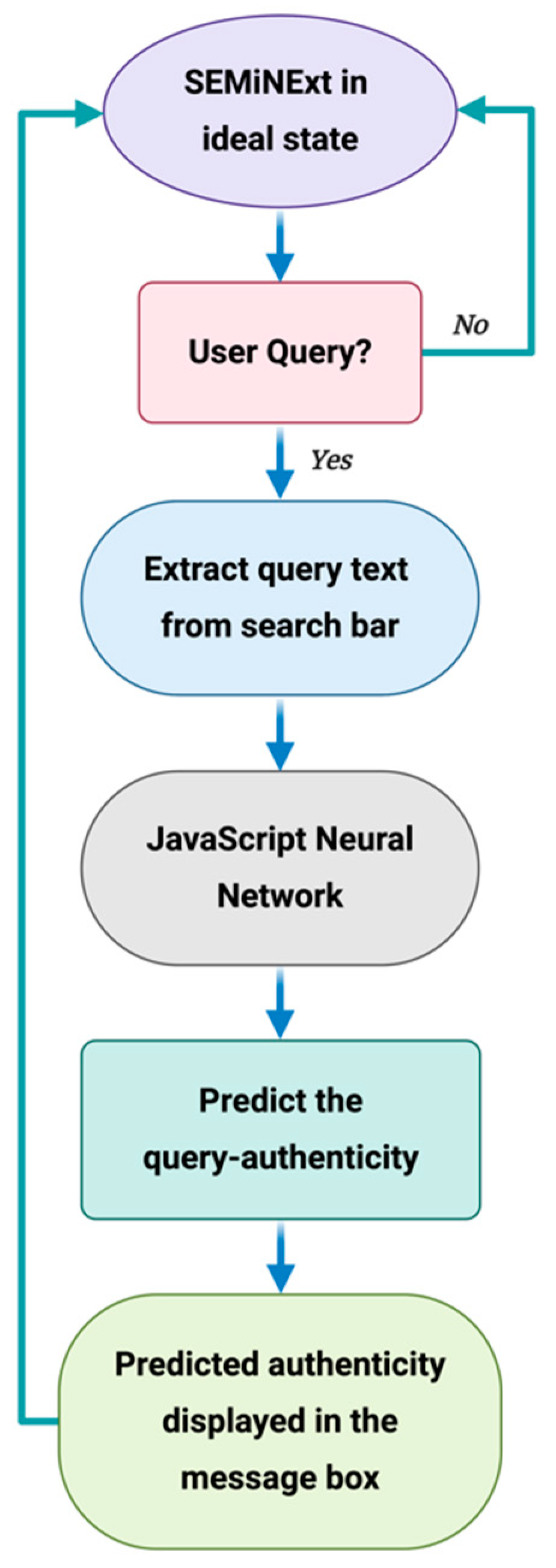
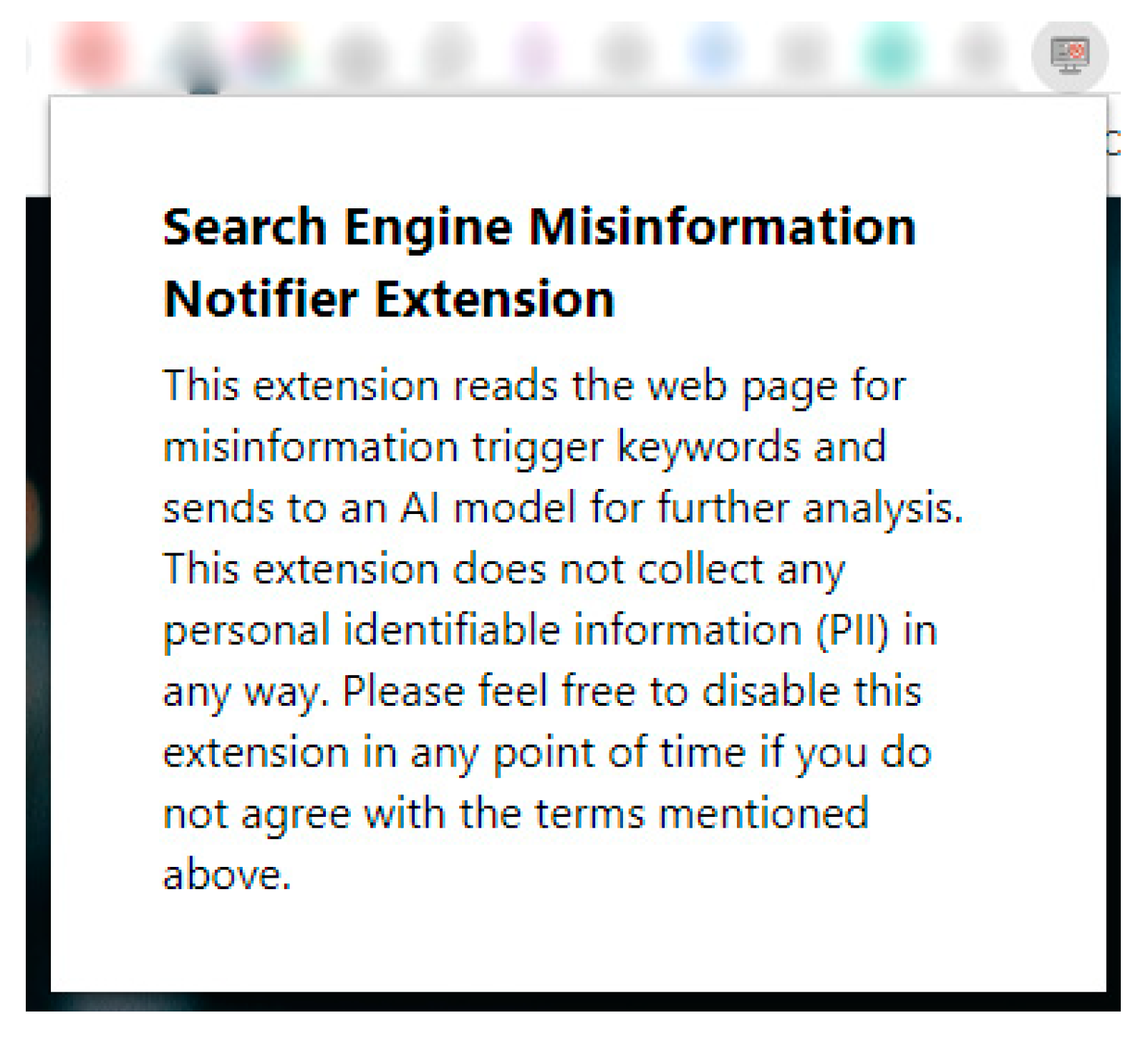
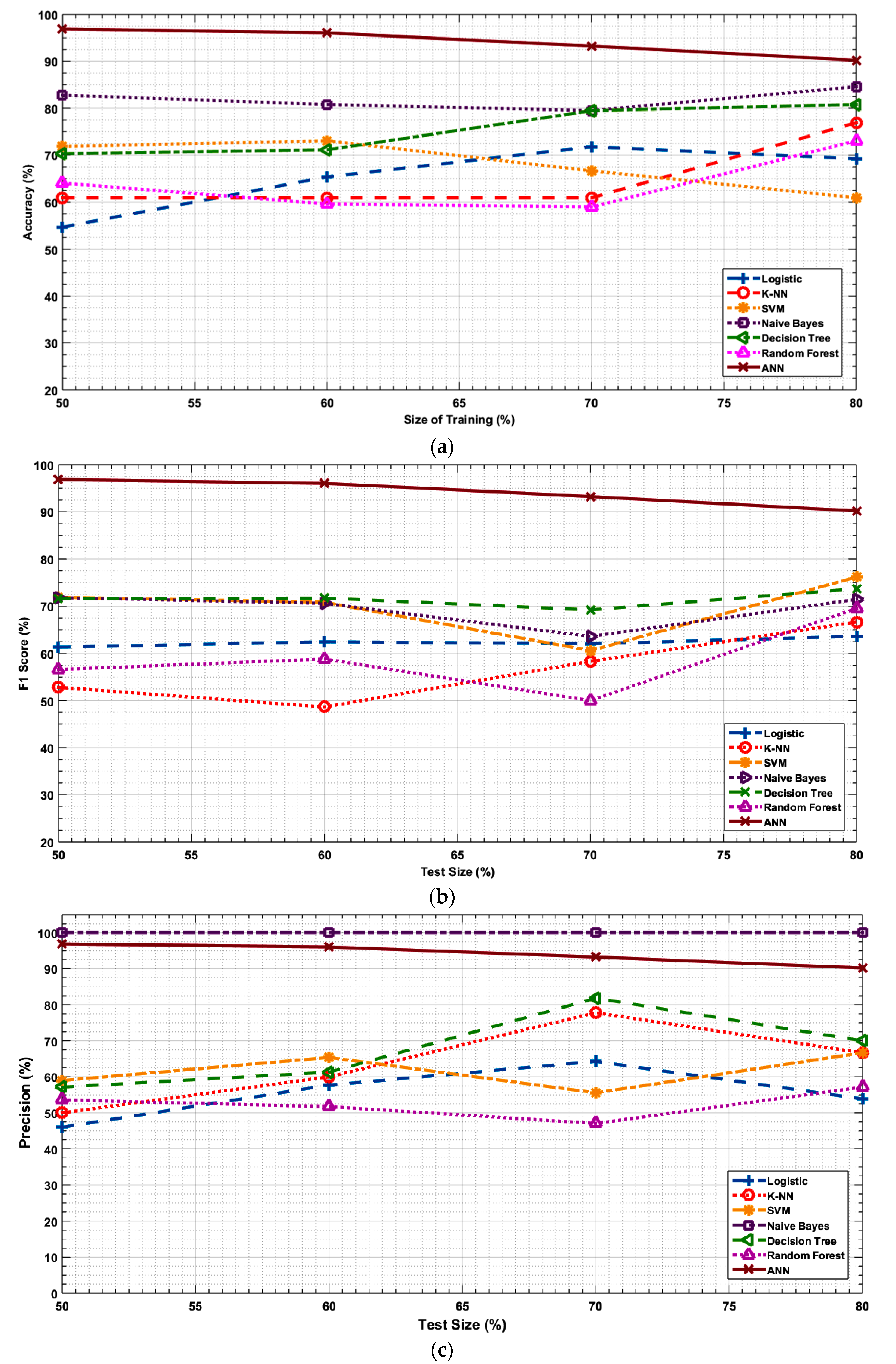
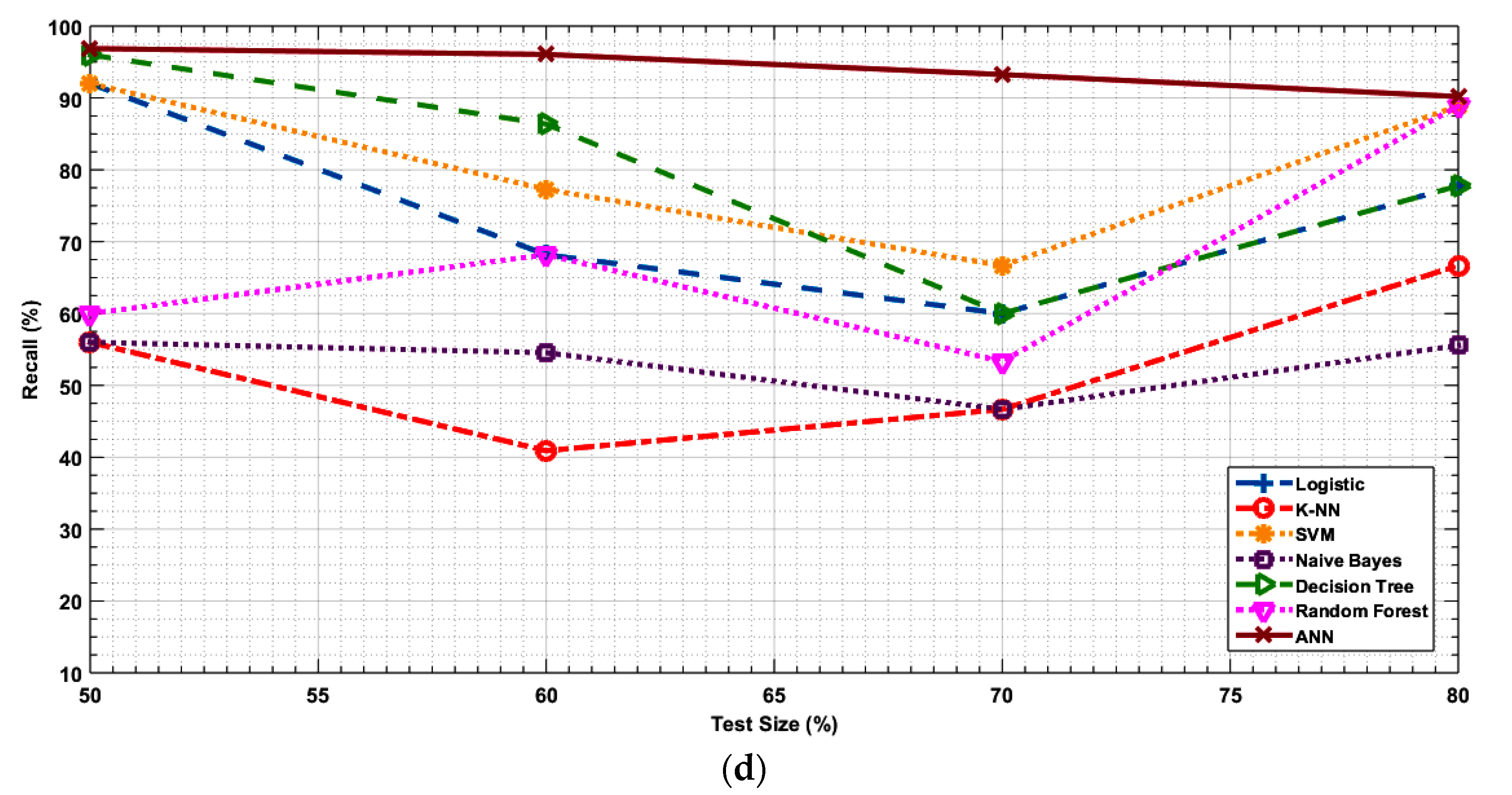
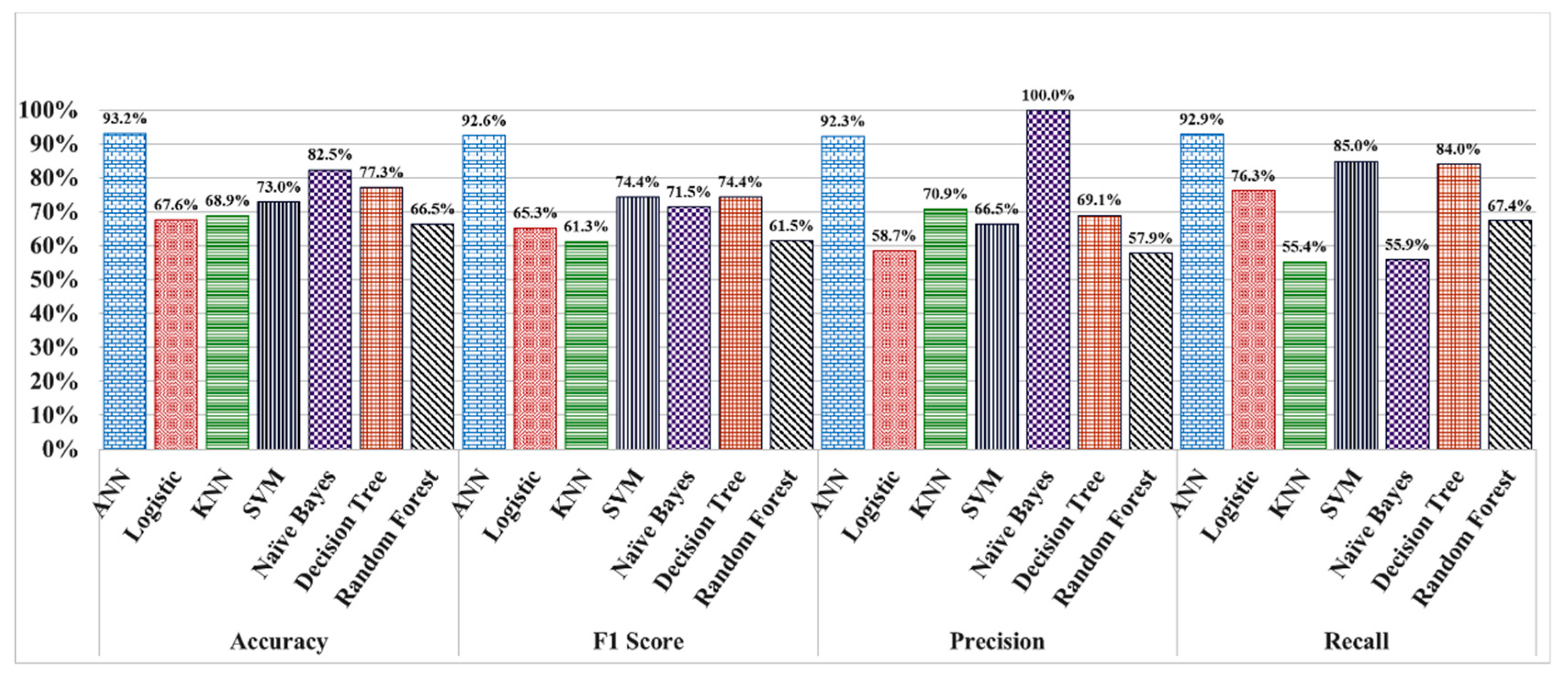
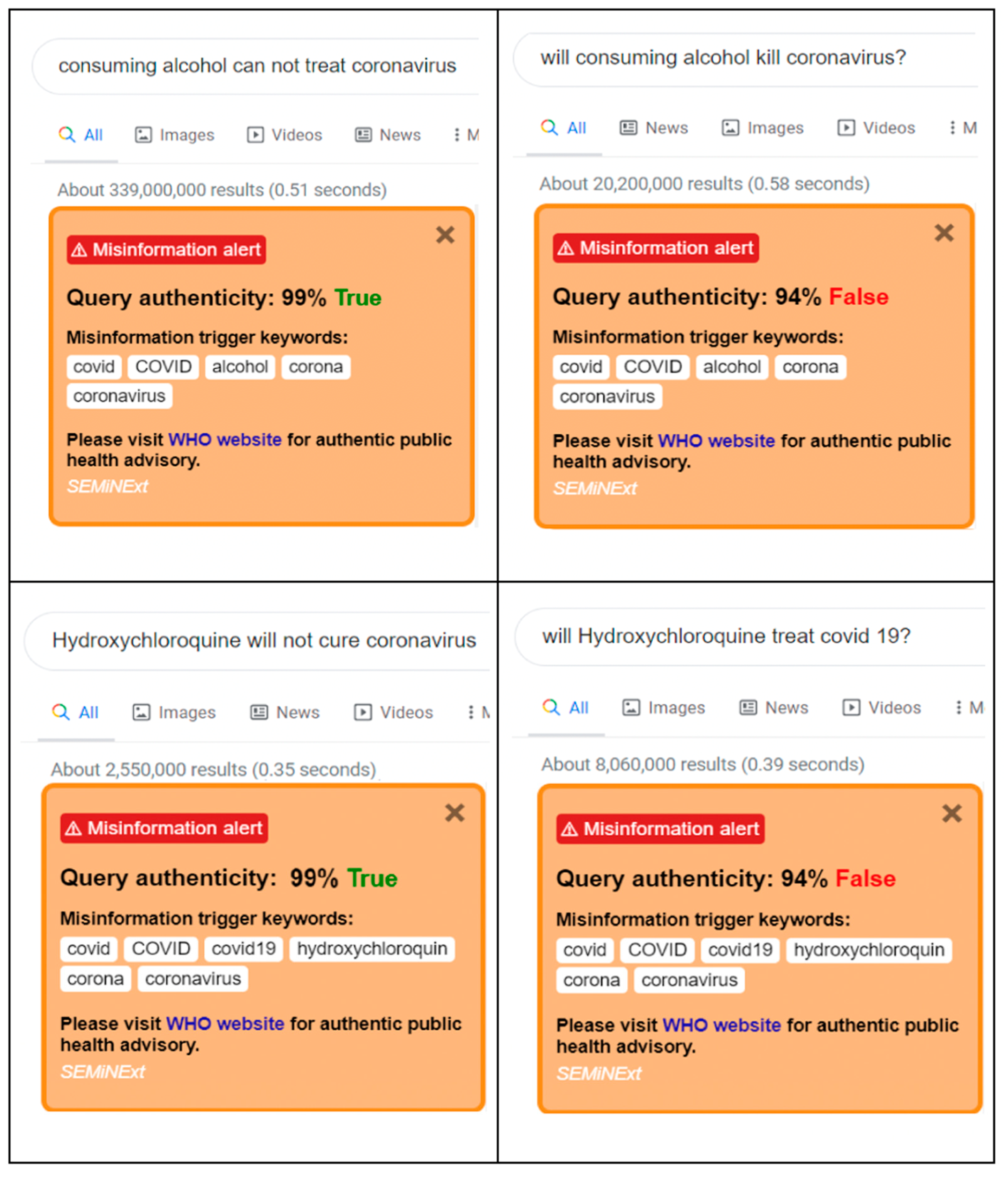
| Predicted\Actual | Positive | Negative |
|---|---|---|
| Positive | True Positive (TP) | False Positive (FP) |
| Negative | False Negative (FN) | True Negative (TN) |
Publisher’s Note: MDPI stays neutral with regard to jurisdictional claims in published maps and institutional affiliations. |
© 2021 by the authors. Licensee MDPI, Basel, Switzerland. This article is an open access article distributed under the terms and conditions of the Creative Commons Attribution (CC BY) license (http://creativecommons.org/licenses/by/4.0/).
Share and Cite
Shams, A.B.; Hoque Apu, E.; Rahman, A.; Sarker Raihan, M.M.; Siddika, N.; Preo, R.B.; Hussein, M.R.; Mostari, S.; Kabir, R. Web Search Engine Misinformation Notifier Extension (SEMiNExt): A Machine Learning Based Approach during COVID-19 Pandemic. Healthcare 2021, 9, 156. https://doi.org/10.3390/healthcare9020156
Shams AB, Hoque Apu E, Rahman A, Sarker Raihan MM, Siddika N, Preo RB, Hussein MR, Mostari S, Kabir R. Web Search Engine Misinformation Notifier Extension (SEMiNExt): A Machine Learning Based Approach during COVID-19 Pandemic. Healthcare. 2021; 9(2):156. https://doi.org/10.3390/healthcare9020156
Chicago/Turabian StyleShams, Abdullah Bin, Ehsanul Hoque Apu, Ashiqur Rahman, Md. Mohsin Sarker Raihan, Nazeeba Siddika, Rahat Bin Preo, Molla Rashied Hussein, Shabnam Mostari, and Russell Kabir. 2021. "Web Search Engine Misinformation Notifier Extension (SEMiNExt): A Machine Learning Based Approach during COVID-19 Pandemic" Healthcare 9, no. 2: 156. https://doi.org/10.3390/healthcare9020156
APA StyleShams, A. B., Hoque Apu, E., Rahman, A., Sarker Raihan, M. M., Siddika, N., Preo, R. B., Hussein, M. R., Mostari, S., & Kabir, R. (2021). Web Search Engine Misinformation Notifier Extension (SEMiNExt): A Machine Learning Based Approach during COVID-19 Pandemic. Healthcare, 9(2), 156. https://doi.org/10.3390/healthcare9020156










